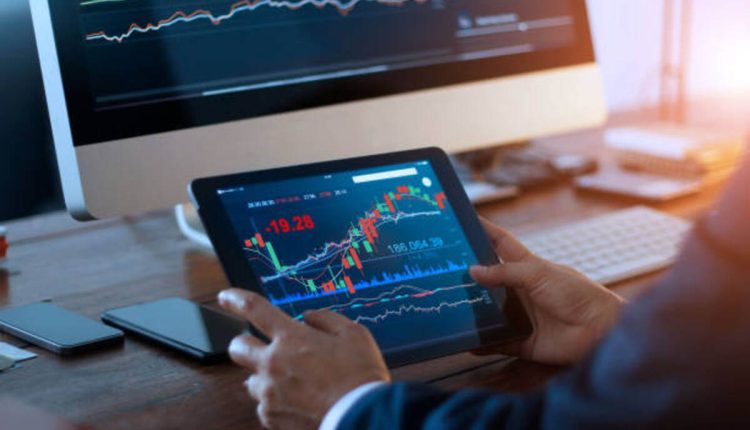CFDs (contracts for difference) are popular financial instruments that rely on the performance of an underlying asset, such as currency pairs, stocks, commodities, or indices. You don’t actually own these assets – instead, you trade price fluctuations in an ever-evolving market. Have the Best information about forex robots.
CFD trading provides access to global markets with minimal margin requirements and leverage-driven profits; however, significant losses may arise should prices move against you.
Liquidity
Liquidity refers to the number of traders willing and able to buy or sell an asset at a given price. Achieving high liquidity requires enough trading activity to support an asset’s current price without negatively affecting its value; when liquidity levels fall too far below this ideal state, it can become difficult for traders to complete trades or make profits.
Trades can use leverage to expand the size of their positions, magnifying any profits or losses exponentially. Leverage trading also increases risk, so traders must understand its intricacies prior to engaging in it.
CFDs allow you to speculate on the direction of prices for various assets such as currency pairs, commodities, equities, and cryptocurrencies. Trading long or short can help you profit regardless of market movements, but CFD trading carries with it some degree of risk, and you could lose more than your initial deposit amount. Therefore, it is vitally important that you select a reputable broker with quality liquidity who offers an array of instruments and round-the-clock customer support service for optimal trading success.
Flexibility
CFD trading gives traders access to multiple financial markets without incurring the total costs associated with buying and selling actual shares. They can use this strategy to invest in commodities like oil and gold, stock indexes worldwide, government bonds, or even currencies in the forex market.
To open a trade, all that’s necessary is to make an educated guess as to whether the price of an asset will increase or decrease in future months. If your prediction proves correct, either buy (go long) or sell (go short) on the deal ticket accordingly—depending on whether your predictions were right. Either way, your prediction could bring you both profits and losses!
Flexibility in forex trading means taking into account critical support and resistance levels when making trading decisions, especially for short-term traders. Doing this allows them to quickly adapt to shifting market conditions. For instance, using pivot point strategies will enable traders to adjust their strategies quickly by rapidly adapting them to current trends by identifying potential reversal points and capitalizing on such turning points to maximize profits.
High Leverage
CFD traders can leverage high leverage to increase potential profits, but it must be understood that using such high levels can also amplify losses quickly, leading to rapid account depletion if not correctly managed.
Leverage refers to the amount borrowed by traders for use in trading the market, such as with Forex or CFD contracts. It allows traders to speculate on price movements without actually owning assets such as Forex and CFD contracts.
CFDs provide more flexible access to an underlying asset than traditional investments due to being traded both long and short, giving traders the potential to profit from both rising and falling prices, something not possible with conventional investments. CFDs do not require the physical purchase of an asset like traditional investments do and, therefore, count as margin trading; traders should only trade CFDs using money they can afford to lose and ensure their broker has segregated client funds to reduce accounting errors.
Margin Requirements
CFD trading allows you to reduce initial investments and risk while potentially protecting more of your capital. However, you must still have sufficient margin in your account to control trades—this requirement will be calculated each time a position opens and displayed live on your platform.
Depending upon your market choice, various instruments require differing amounts of margin. For instance, highly liquid markets often have lower margin requirements than volatile or illiquid ones.
The margin requirement is calculated based on the current price of your chosen instrument and the lot size you wish to open. Unlike leverage, which magnifies gains and losses, margin is an amount set aside as collateral against open positions on your account. A balance is kept between Margin Closeout Value and Equity on the platform for real-time display; should your margin fall below this level, the platform automatically closes some profitable positions first.
Fees
CFD providers primarily make money by taking a spread between bid and offer prices, which varies between brokers. On average, it is about one pip (0.1%) per contract purchased; for instance, if you are buying ten contracts worth of shares at $120 each, then your broker would take $13,000 as payment from this purchase transaction.
CFDs also generate profits through overnight financing charges, similar to interest on margin accounts and typically tied to LIBOR or other market reference rates.
Market data subscription fees, which are separate from trading costs, may also incur expenses to traders; these tend to be less prevalent than brokerage fees that CFD traders must cover. Finally, some brokers charge account inactivity fees should they not see any activity on an account for an extended period. Nonetheless, these are unlikely to affect most traders since most CFDs are traded daily; their benefits far outweigh these small additional fees.
Read also: Baldwin Trading Post.


